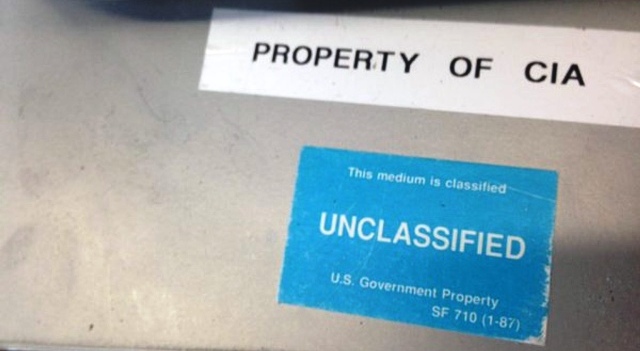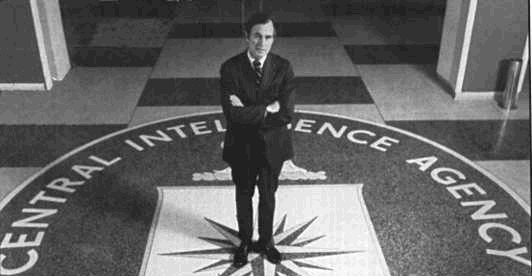
“They should; it’s buried out there somewhere,” is one of the many lines that was decoded from the Kryptos, an encoded sculpture that looks like a piece of art and stands on the grounds of the Central Intelligence Agency. But who knows how many times the agency has sent people looking for such things. In addition, there is always the possibility that they have declassified this information.
With this information in mind, what if we told you that a database of such ‘de-classified’ information exists in a not-so-popular building that is protected by the agency itself, and is located in the capital of the United States of America? The database, or a vault, to be precise, consists of ten million or more declassified records.
In response to this news, a crowdfunding effort hopes to reveal all of the declassified records. This campaign was established by Michael Best, who published documents on JFK’s assassination on Weisberg Archive. Currently, the project is asking for fifteen thousand dollars in contributions to free the files. So far, the campaign has received 89 backers who gave $1 and 1 backer who gave $1000, however, the total number of backers stands at 462 (information as of 20th March 2016).

The agency’s vault, referred to as CREST, can only be reached by a few personal computers placed in a protected national building. However, even though the material can be accessed by the investigators, the process is not easy. In order for them to exclusively have access to the database, the researcher(s) must go to the National Archives, which are located in College Park, Maryland.
The Central Intelligence Agency understands that these appointments can cause time barriers for many researchers and analysts. Michael has also confirmed that the information is difficult to access. He further added that there are only four computers that are allowed to access those articles of the declassified data, and to make it more difficult for people, if you decide to ask the information desk, they will simply look at you with a puzzled gaze and refuse to offer you assistance.

“People attempting to check out on the National Archive’s page as to how they can access those computers, are not going to discover it on the website about conducting research at that venue or along the page for digital data at that location,” says Micheal Best. “Those details are put away on the web page for online directories – in spite of not being on the world wide web.“
In an effort to encourage investments, Micheal has specified the campaign’s financing goals. As outlined on Micheal’s Kickstarter profile, the supplies include a Fujitsu FI-6770 Scanner (valued at $5,439), a thirteen inch MacBook Air (costing $1,000), and other office supplies (you can check the details by clicking here). Micheal also explains that when a researcher gets near the computers, they aren’t permitted to save and copy the digitized files – instead they need to print them out while being watched by a number of digital monitoring systems.
However, once the campaign is complete and the money is there, Micheal plans to print those documents, scan them and upload them. Once this process is complete, people will be able to access this hidden information for free.

Micheal describes a variety of subjects that are showcased throughout the agency’s documents. Files that include up to thirty thousand pages or more, provide information about the beginning of the Central Intelligence Agency, the first five directors of the agency, and the highest stage strategy reports and memorandums.
With that said, the content that fires-up the most interest are the documents that encompass the agency’s Star-Gate program. What is that you ask? The Star-Gate program is a 25-year Intelligence Community effort that used men and women who claimed to take advantage of their gifts—such as, telepathy, precognition, as well as clairvoyance—in order to obtain and identify facts about the enemy.

The process of establishing these documents for free, will be difficult. According to Micheal, it will take many years to upload the declassified data. And there are also the factors and challenges that he will have to deal with over the years – and they are not something from a James Bond movie.
Want to make a change support #Kickstarter campaign for Publishing #CIA declassified documents.
Spread the wordhttps://t.co/0KeWhVsRPm
— Anon.Dos (@AnonDos_AnonHQ) 20 March 2016
“CIA is paying for the paper and toner, and has for years – but it is possible that this could change. If it does, then the new rules will have to be explored for possible ways to continue. The rate of printing is dependent on the flow of fresh paper and toner. If the Archives run out of either, then printing and digitizing will have to pause while CIA refreshes their supplies. CIA could preempt the project by making the entire CREST database available online or speeding up their response to MuckRock’s request for the database (which is estimated to take between 6 and 28 years to fulfill). Far from being a challenge, this would be a total success. If this does happen, then the effort will shift to digitizing other records,” says Micheal Best’s Kickstarter profile.
Source: The Free Thought Project, Kickstarter
You want to support Anonymous Independent & Investigative News? Please, follow us on Twitter: Follow @AnonymousNewsHQ
This Article (This KickStarter Campaign Is Going To Publish All The Central Intelligence Agency’s Hidden Declassified Files) is free and open source. You have permission to republish this article under a Creative Commons license with attribution to the author and AnonHQ.com.





Keep a eye on this
Website Coming soon
https://www.facebook.com/donutsoperations/?ref=hl
There is also commentary around that the FBI’s database has been compromised and acquired and that it is going to be released on the YPN network…in full – criminal, intelligence and counterintelligence.